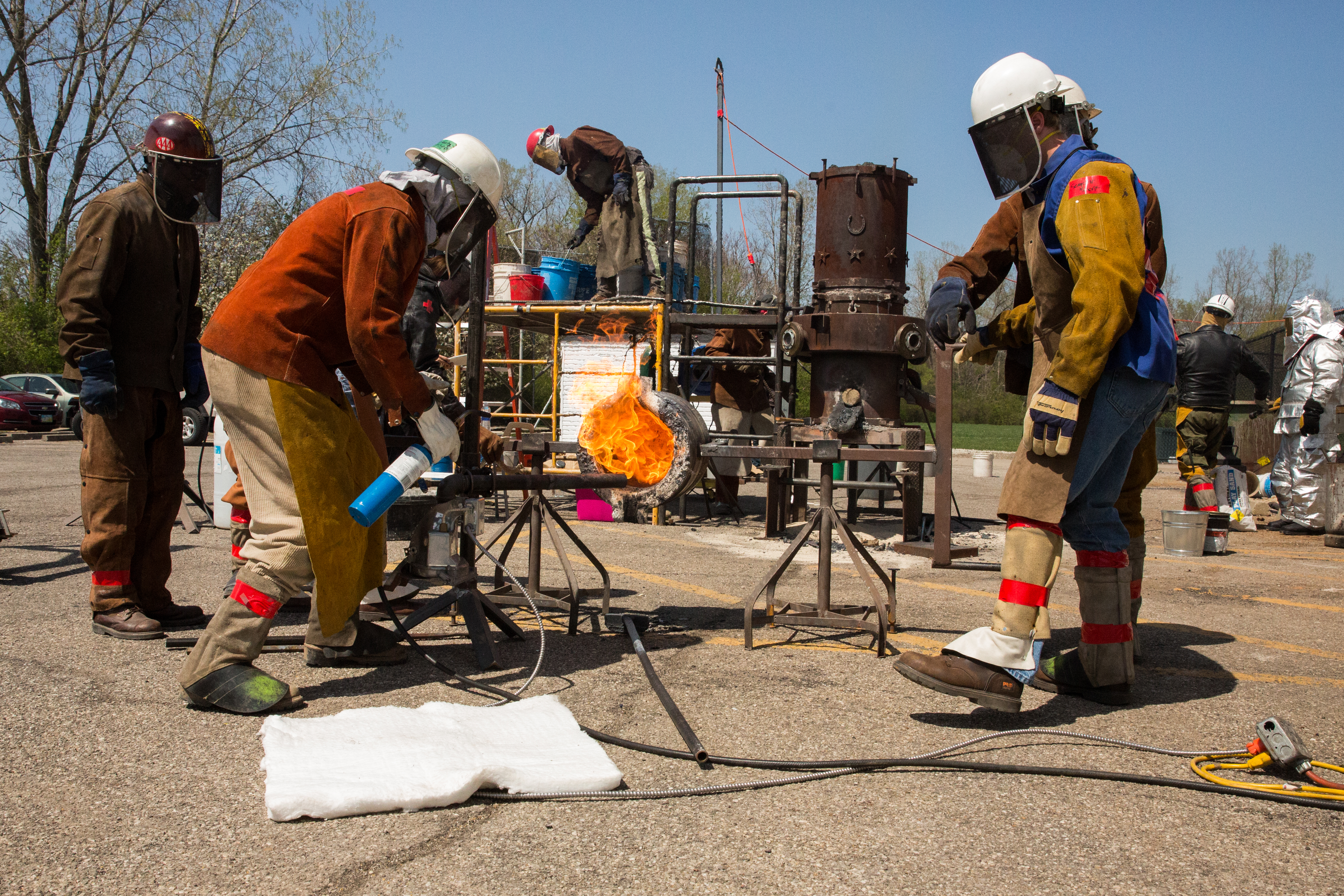By Sarah Bunch
Transcript Correspondent
Sparks flew on Friday as a 400-pound ladle filled with molten iron was poured into the awaiting molds created by 3-D design and sculpture students at Ohio Wesleyan.
OWU art professor John Quick hosts an iron pour in Haycock Hall every semester. All students enrolled in 3-D design and sculpture participated as did a few alumni.
“I begin planning this event over a month in advance,” Quick said, “making my artwork and directing all activities in sculpture prior to the pour. The day of the pour I set up the furnace and all the associated equipment.
“During the pour, I direct all activity at and around the furnace, opening the spout (‘tapping out’) for every ladle-full of iron, and working at the furnace, making sure that it operates correctly.”
Classes went through a slightly different process and created different types of molds for the event based on the course.
“Students in sculpture made ceramic shell molds from wax sculptures and also resin-bonded sand molds,” Quick said. “The 3-D design students make molds by carving negative space in bonded sand blocks. We call these scratch block molds. All of the work was successfully cast.”
Because 3-D design is a prerequisite for sculpture, all the students enrolled in the upper level course have already participated in one iron pour.For most of the students enrolled in 3-D design, it was a new experience.
Sophomore fine arts major and 3-D design student Mukami Mboche said, “I really enjoyed watching the iron get poured. The color of the iron was really cool and vibrant.”
Design students arrived about 1 p.m. to begin setting up materials such as the molds and the charges, which are the buckets of iron being put into the furnace. Students enrolled in sculpture, however, had a much different experience. For Willow Smart, a junior art education major, it was her second time participating in an iron pour at OWU.
“I had to get up at 6 in the morning,” she said. “I was there by 7:30. Me and the rest of the sculpture and 3-D students just helped prepare with John.”
Alumni also helped by “pulling the cupola furnace outside and setting up bots, which are plugs basically for the furnace to stop the iron from coming out when there’s time between the iron pour,” Smart said. Students and alumni broke the iron for melting and got the molds ready.
The pour started at 1 p.m. and was open to the public. All the molds were full and cooling by 3 p.m. Cleanup lasted until 6:30 p.m.
The OWU Iron Pour is the result of John Quick’s independent research on cupola furnaces. Quick described several conferences that eventually led to his fascination with the process and the idea of building his own furnace.
“I have been organizing and leading iron pours at OWU every semester since 1998, that is, for twenty-one years,” Quick said. “Prior to that time, I had been operating a modest bronze foundry at OWU since 1989.”
